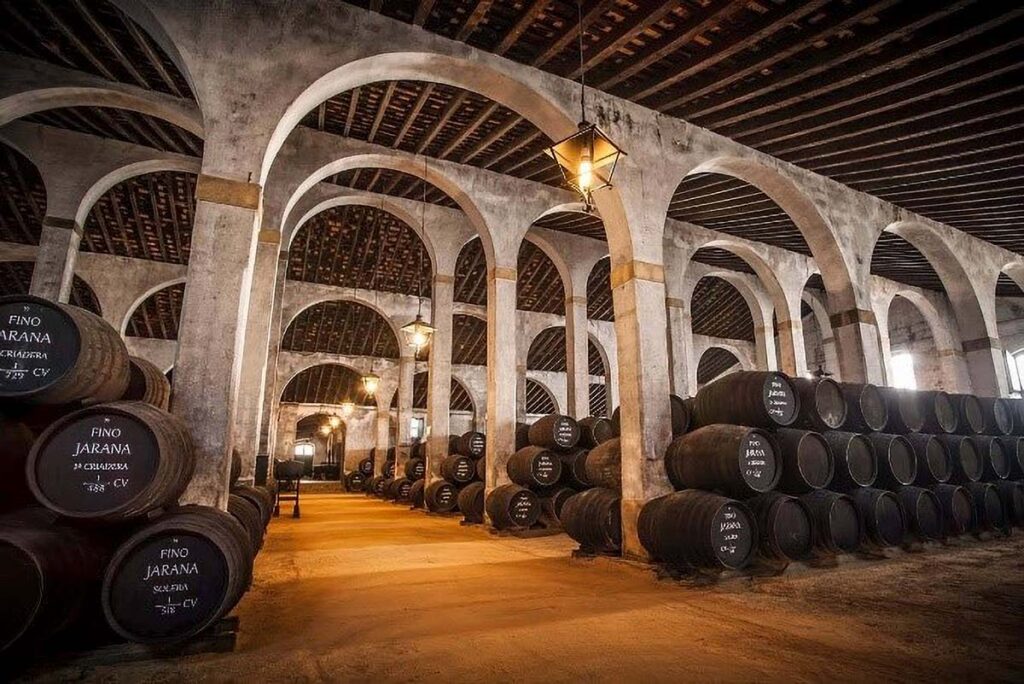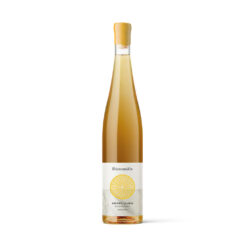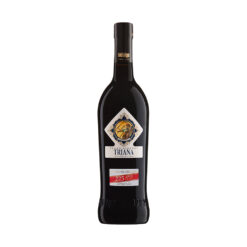Articles
International Sherry Week 2022
Jerez has witnessed many incarnations as a wine producing region. From the first signs of civilisation in the Phoenician period to the post-industrial age, there have been many twists and turns to match any wine region in the world. Today Jerez is in a healthy position to reassess its future and return to the qualities that has brought the region such continued success; viz. the soil, climate and winemaking skills.
You could fill a library with the stories of Jerez’s illustrious history. But it was at the beginning of 19th Century where we see the most significant contemporary development, the creation of the solera system. Prior to that date, a bottle of Sherry was made with the static system of fermentation and the maturation of individual vintages. The solera was a monumental shift. By mixing young wine with old, a dynamic system of maturation was put in motion where a wines average age became the deciding factor. Consistent quality and the ability to cater to market trends, this is where we start to see the kaleidoscope of Sherry styles.

The success story of Jerez from the beginning of the Modern age, post-French Revolution, is one of the most brilliant in the wine trade. Commercial routes deepened with Britain, the Netherlands and other north European countries. Excluding the inevitable dip during the phylloxera plague, from the late 19th Century onwards sales of Sherry grew incrementally.
Within Britain Sherry was omnipresent. Probably the first wine most people ever experienced and certainly the most likely drink one would be offered on entering a home. Like Champagne, Sherry was one of the first wine regions to legally sought international trademarks to protect themselves against foreign imitations. Within Spain also, Jerez was the first region to successfully apply for PDO status (Protected Denomination of Origin) along with La Rioja. Sherry’s consistent quality and value had created the foundations for a robust local industry.
The fall came due to a combination of factors. Firstly, tastes started to change, or rather to expand. Curious consumers were willing to try new styles and there was a trend towards dry, still wines. Secondly, Jerez’s modus operandi was being influenced more by the accountants and business men rather than by the wine makers themselves. When the sales started to plateau, confidence fell dramatically and a domino effect took place as the great houses fell.

In desperate straits, Jerez has been recalibrating since the “crash” in the early 80’s. Vines today make up just a third of the land that was under vine in the 1970’s. Those who had invested heavily in continued growth were left in a desperate situation and many of the famous names broke up. The process of decline was accelerated by the involvement of a company called Rumasa who bought up a large number of Sherry houses. The CEO’s activities were shady in the extreme and he later served a long jail-term for fraud.
For the speculator, the decline in sales and reduction in the area of production presented a bad picture. However, in reality Jerez had over stretched itself and was laying vines in poor areas. More than this, the quality of the wine itself was beginning to suffer as corners were cut on economic lines.
This pragmatic approach to wine making still lingers today. Nearly a half of all grapes grown in the Marco de Jerez are now bought up from small growers by 7 cooperatives who pay a flat rate of around 2 Euros per kilo. The only prerequisite required is that the grapes surpass 10’5 Baumé. The incentive for the growers, therefore, is purely based on volume.
Those vines that are owned by the bodegas themselves often don’t fare much better either. Geared towards the mass market, the onus is on cheap production to ensure the prices can be kept low. The fact that the solera can add the house-style character to the wine has resulted in a steady decline in the quality of grapes going into the soleras.
It is no surprise, therefore, that any visit to Jerez or the surrounding areas tends to be centred around the bodega. The pagos (parcels) where the grapes come from are rarely talked about and not included in most official tours. For the majority of bodegas there does appear to be a blind-spot when it comes to the notions of terroir, provenance and grape-quality.

Within this vacuum have appeared several growers trying to redirect the focus back to premium quality Sherry. The first movement in this direction came from a group of friends who worked in the wine trade in different capacities. As a hobby, they started tasting individual botas (barrels) in the cavernous bodegas of Jerez.
It doesn’t require a mathematics degree to work out that as sales declined the age of the average wine in the solera increased. Compounded by the positioning of Sherry as an entry-level drop, certain soleras of exceptional quality were left to mature. The friends realised this and began to explore around the region to try and discover hidden gems. They were so delighted with what they found that they decided to bottle each bota exclusively as a single release, naming the specific bota and bodega. They call themselves Equipos Navazos and have done more to highlight the quality potential in Jerez than anyone else in recent years.
Into that slipstream have emerged a new-wave of growers with belief in the terroir of Jerez. Still wines are being explored by the likes of Luis Perez and Alejandro Muchada, to name but a few. Indigenous grape varieties are being reintroduced as well as varietals from across the border in Portugal.

Within Sherry production there are also rising stars from within the region and talent being drawn in from abroad. Money is being invested in prime sights and new blood is arriving with new ideas. The most notable arrival being that of Peter Sisseck of Pingus fame who has released a Fino – Viña Corrales – and has bought excellent pagos in Balbaina to retain control of the entire winemaking process.
Diatomists is supporting smaller growers and almacenistas who are committed to this new approach in Jerez DO and Sanlúcar de Barrameda DO. Diatomists Manzanilla comes from a pago in Miraflores Baja with exceptional albariza and a text book aspect on a gentle SW slope. Luis tends to his vines with great care and his wine exhibits impressive fruit concentration as well as floral qualities in harmony with the classic flor and bota profiles.

The Diatomist bota range requires a different skill as the solera comes to the fore. The buying team carry out meticulous tastings searching for botas that have retained freshness, floral notes and ripe fruit. The consistent quality of these wines throughout the solera are extraordinary, but there are always slight variations where a careful selection makes all the difference.
Across Jerez DO and Sanlúcar de Barrameda DO the realignment is taking place to return to the area’s roots and reinvest in the people and plots that brought the area such consistent appeal. Perhaps Sherries greatest challenge is to demystify a word that defines several styles from the driest to the sweetest. Whilst the world looks for simple messages to communicate at breakneck speed, Sherry can certainly learn a lot in terms of how it presents itself and communicates with the world. For the curious wine aficionado Jerez DO and Sanlúcar de Barrameda DO represent a burgeoning wine region full of surprises. Well aware of its past glories, the growers of today are not resting on their laurels and have the confidence and enthusiasm to open a new chapter in the region’s rich story.
(£13.45 per half bottle)
Save 12% on a case of 6 half bottles
(£19.00 per half bottle)
Save 11% on a case of 6 half bottles
(£17.95 per bottle)
Save 11% on a case of 12 bottles




